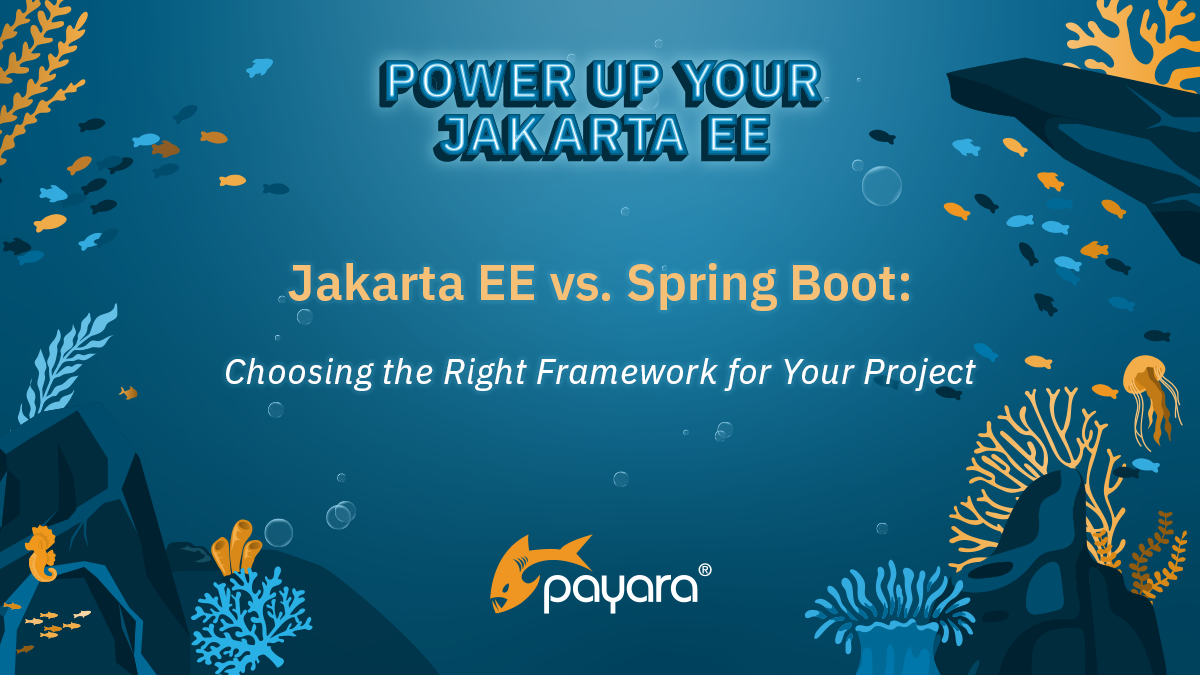 3 minutes
3 minutes
End-of-Life Technology: How to Drive Innovation Without Compromising Stability
When legacy systems approach end-of-life (EOL), enterprise IT teams typically face the choice of moving forward at all costs […]

In the Java ecosystem, two main frameworks stand out for enterprise application development: Jakarta EE (formerly Java EE) and Spring Boot. While both options aim to simplify enterprise Java development, they take distinctly different approaches. This comprehensive comparison will help you make an informed decision on which framework is best suited to support your next project.
|
Aspect |
Jakarta EE |
Spring Boot |
|
Development Model |
Standards-based specifications implemented by vendors |
Opinionated “convention over configuration” approach |
|
Governance |
Community-driven under Eclipse Foundation |
Single vendor (Broadcom) with community support |
|
Primary Focus |
Stability and backward compatibility |
Developer productivity and faster adoption of modern technologies |
|
Design Philosophy |
Standardization across implementations |
Rapid application development with sensible defaults |
Spring Boot emphasizes rapid development with its Spring Initializr, pre-configured embedded servers and extensive auto-configuration capabilities. Everything you need comes bundled in a standalone application, making it quick to get started and deploy.
Jakarta EE takes a more traditional approach, requiring explicit configuration and separate runtime setup. While this means more initial setup time, it provides greater control and clarity over your application’s infrastructure.
Both Java frameworks offer flexibility, but in different ways:
Jakarta EE offers:
Spring Boot provides:
|
Feature Category |
Jakarta EE |
Spring Boot |
|
Security |
Comprehensive built-in features |
Flexible security framework |
|
Transaction Management |
Robust built-in support |
Spring Transaction abstraction |
|
Cloud Integration |
Emerging cloud-native support |
Extensive cloud-native capabilities |
|
Microservices Support |
Available through MicroProfile |
Native support via Spring Cloud |
Both Java frameworks can deliver excellent performance when properly configured. The key differences lie in their operational characteristics:
Jakarta EE provides:
Spring Boot typically offers:
Here’s a simple REST endpoint in both frameworks:
Jakarta EE:
@Path("/greeting")
@RequestScoped
public class GreetingResource {
@GET
@Produces(MediaType.APPLICATION_JSON)
public Response getGreeting() {
return Response.ok(new Greeting("Hello, Jakarta EE!")).build();
}
}
Spring Boot:
@RestController
@RequestMapping("/greeting")
public class GreetingController {
@GetMapping
public Greeting getGreeting() {
return new Greeting("Hello, Spring Boot!");
}
}
Jakarta EE has a steeper initial learning curve but offers a more structured learning path. Its standardized approach means that once you understand the core concepts, they apply consistently across different implementations.
Spring Boot generally offers an easier entry point for modern Java developers, with extensive documentation and community resources. However, mastering the entire Spring ecosystem can take considerable time due to its vast scope and frequent updates.
Both frameworks are actively evolving to meet modern development needs:
Jakarta EE is:
Spring Boot is:
The Spring ecosystem’s transition to Broadcom ownership has sparked discussions in the community, but the framework’s open-source nature and strong community foundation continue to drive its evolution and adoption.
The choice between Jakarta EE and Spring Boot often comes down to specific project requirements and organizational needs. Jakarta EE shines in traditional enterprise environments where standardization and stability are paramount, while Spring Boot excels in rapid development and modern application scenarios.
Consider your team’s expertise, project requirements and long-term maintenance needs when making your decision. Both frameworks are excellent choices when used in their sweet spots, and understanding these differences will help you make the right choice for your specific situation.
Remember that it’s also possible to mix both frameworks in larger organizations, using each where it makes the most sense. The key is to align your choice with your specific use case rather than following general trends.
Share:
 3 minutes
3 minutes
When legacy systems approach end-of-life (EOL), enterprise IT teams typically face the choice of moving forward at all costs […]
 5 minutes
5 minutes
November has been one of the busiest months of the year for the Java and Jakarta EE ecosystem. With […]
 3 minutes
3 minutes
Working with enterprise Java databases can sometimes feel like swimming upstream. Jakarta EE 11’s Jakarta Data helps developers glide […]